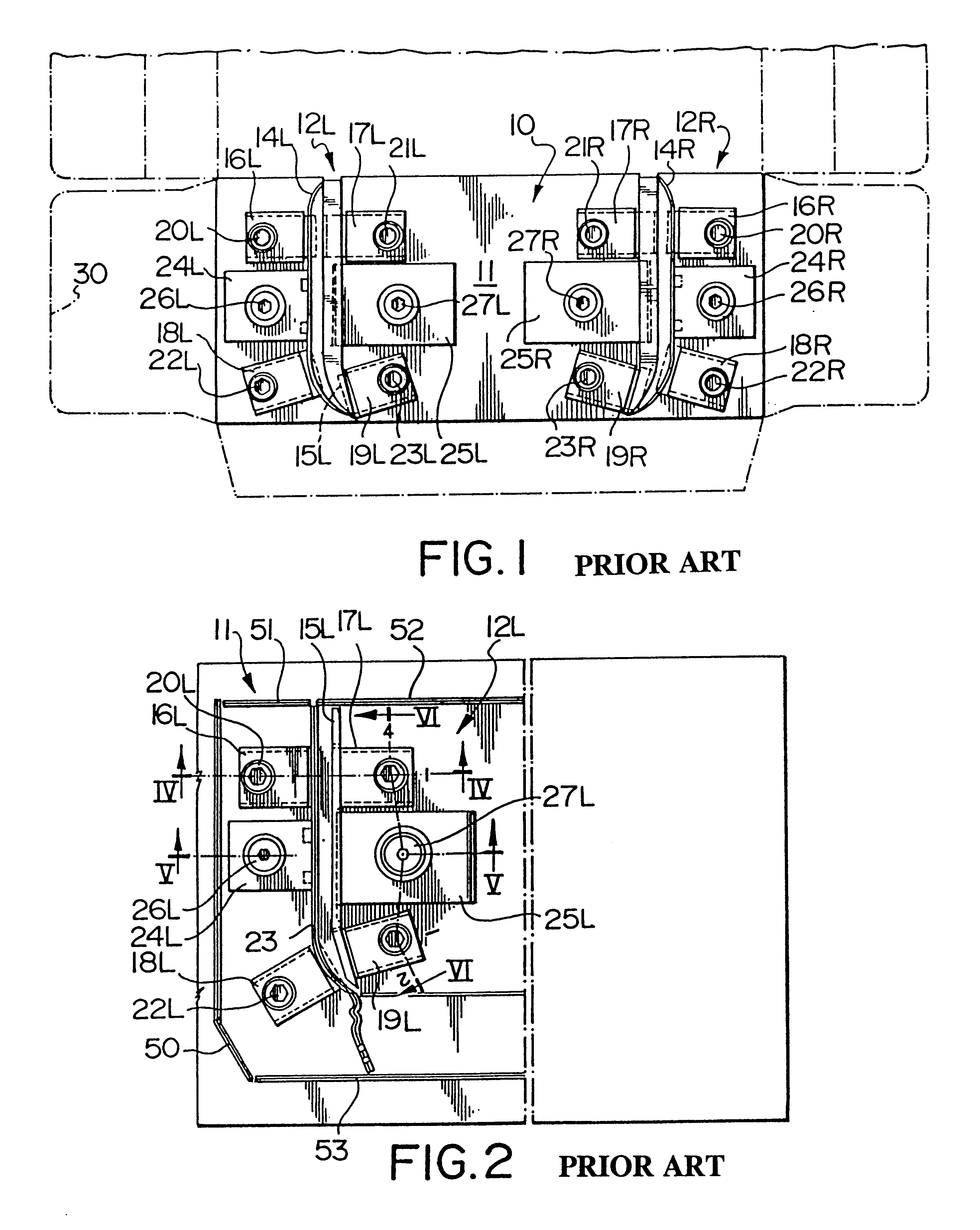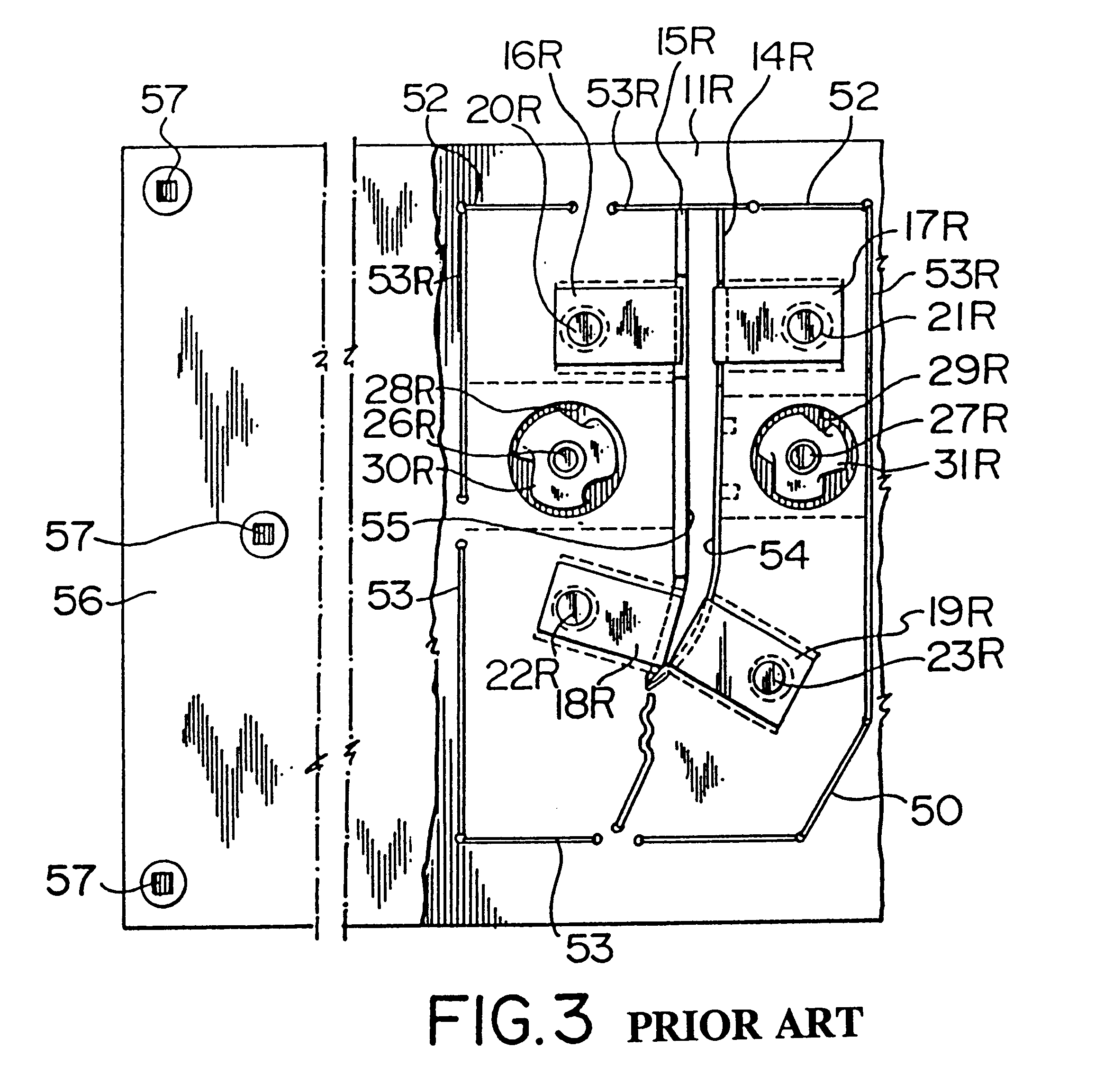Cutting, scoring and perforating die set and method
a technology of perforating dies and dies, which is applied in the field of cutting, scoring and perforating die sets and methods, can solve the problems of reducing the life of steel rule dies that had been encavitated to support the steel rules by introducing plastic materials to support the rules in a solid base material, and affecting the production efficiency of steel rule dies
- Summary
- Abstract
- Description
- Claims
- Application Information
AI Technical Summary
Benefits of technology
Problems solved by technology
Method used
Image
Examples
first embodiment
This first embodiment of an aspect of this invention will now be described with reference to FIG. 10 and FIG. 11.
As seen in FIG. 10, the die block 1010 of the first embodiment of a broad aspect of this invention includes a left-hand side die set and a right-hand side die set of die blades and perforating knives (as was described for the structural embodiment of FIG. 1) but, in this FIG., only the left-hand die set 1012L will be shown, the right-hand side die set being identical to, but being the mirror image of, the left-hand die set 1012L,
The left-hand side die set 1012L includes a jackable die blade 1014L and a jackable perforating knife 1015L. The jackable die blade 1014L is secured to wooden block 1010 in a jackable manner as was previously described with reference to FIG. 1 to FIG. 8, and so will not be further described in detail. This "jackable" mounting which was previously described is shown in abbreviated form as BLOCK J, and will not be further described. The die blade 10...
second embodiment
This second embodiment of an aspect of this invention will now be described with reference to FIG. 12 and FIG. 13.
As seen in FIG. 12, the die block 1210 of the second embodiment of a broad aspect of this invention includes a left-hand side die set and a right-hand side die set of die blades and perforating knives (as was described for the structural embodiment of FIG. 1) but, in this FIG., only the left-hand die set 1212L will be shown, the right-hand side die set being identical to, but being the mirror image of, the left-hand die set 1012L.
The left-hand side die set 1212L includes a jackable die blade 1214L, a jackable perforating knife 1215L and a jackable anvil 1216L. The jackable die blade 1014L is secured to wooden block 1210 in a jackable manner as was previously described with reference to FIG. 1 to FIG. 8, and so will not be further described in detail. This "jackable" mounting which was previously described is shown in abbreviated form as BLOCK J, and will not be further d...
third embodiment
This third embodiment of an aspect of this invention will now be described with reference to FIG. 14, FIG. 15 and FIG. 16.
As seen in FIG. 14, the die block 1412L of the third embodiment of a broad aspect of this invention includes a left-hand side die set and a right-hand side die set of die blades and perforating knives (as was described for the structural embodiment of FIG. 1) but, in this FIG, only the left-hand die set 1412L will be shown, the right-hand side die set being identical to, but being the mirror image of, the left-hand die set 1412L.
The left-hand side die set 1412L includes a jackable die blade 1414L, and a jackable anvil 1415L. The jackable die blade 1414L is secured to wooden block 1410 in a jackable manner as was previously described with reference to FIG. 1 to FIG. 9, and so will not be further described in detail. This "jackable" mounting which was previously described is shown in abbreviated form as BLOCK J, and will not be further described. However, it may be...
PUM
 Login to View More
Login to View More Abstract
Description
Claims
Application Information
 Login to View More
Login to View More - R&D
- Intellectual Property
- Life Sciences
- Materials
- Tech Scout
- Unparalleled Data Quality
- Higher Quality Content
- 60% Fewer Hallucinations
Browse by: Latest US Patents, China's latest patents, Technical Efficacy Thesaurus, Application Domain, Technology Topic, Popular Technical Reports.
© 2025 PatSnap. All rights reserved.Legal|Privacy policy|Modern Slavery Act Transparency Statement|Sitemap|About US| Contact US: help@patsnap.com



